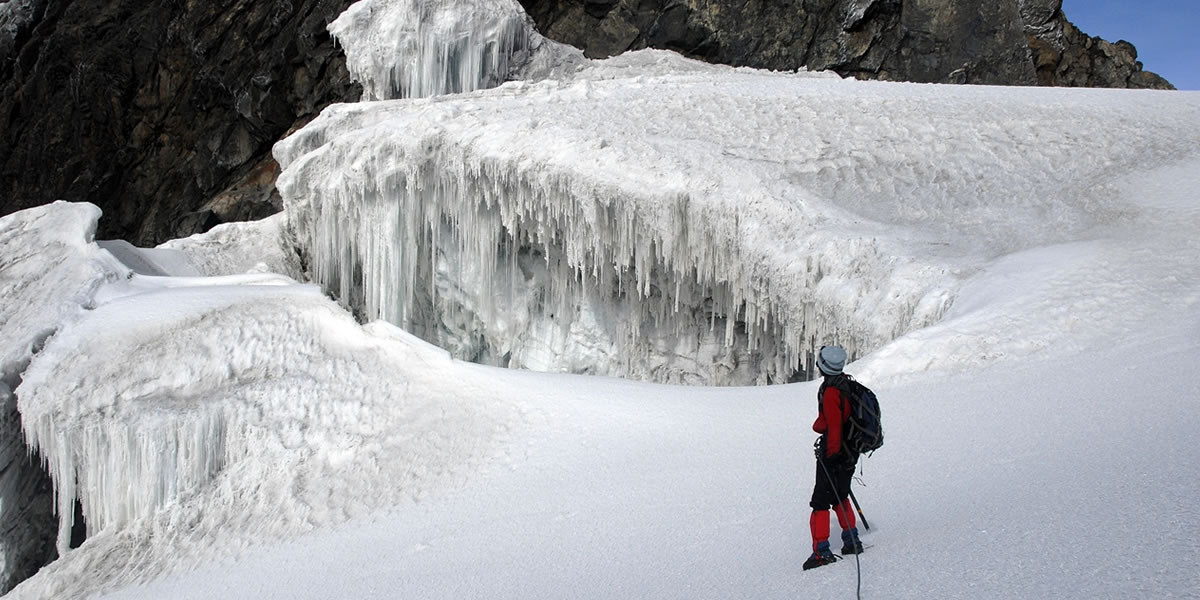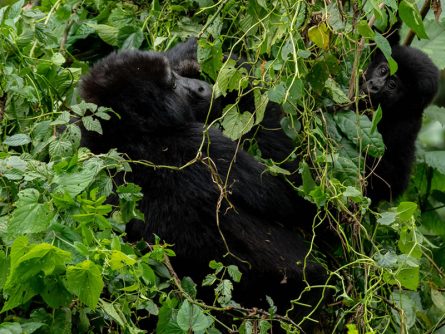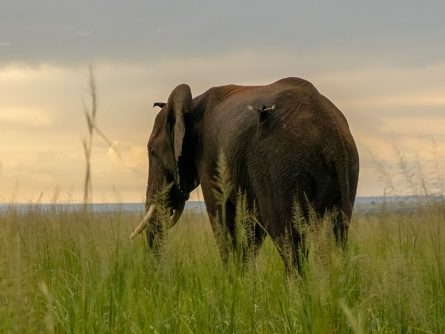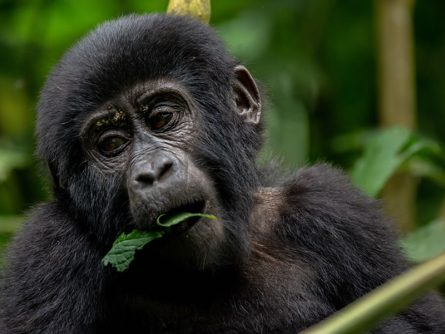Rwenzori Mountains National Park, often referred to as the "Mountains of the Moon," is one of Uganda's most breathtaking and challenging natural wonders. Located in the western part of the country, this UNESCO World Heritage Site covers an area of 996 square kilometers and is renowned for its stunning landscapes, diverse ecosystems, and the opportunity to experience high-altitude adventure. Whether you are an avid mountaineer, a nature enthusiast, or someone seeking a unique cultural experience, Rwenzori Mountains National Park offers something truly extraordinary.
Location: Western Uganda, along the border with the Democratic Republic of the Congo (DRC).
Altitude: Ranges from 1,670 meters to 5,109 meters (Mount Stanley's Margherita Peak).
Best Time to Visit: December to February and June to August (dry seasons).

Activities in Rwenzori Mountains National Park
- Mountain Trekking in Rwenzori mountains National Park
Mountain trekking in the Rwenzori Mountains is a major draw for adventure seekers and mountaineers. The park offers some of the most challenging and rewarding trekking routes in Africa, leading to stunning peaks and glacial landscapes.
Key Trekking Routes in Rwenzori mountains National Park
- Margherita Peak (Mount Stanley):
At 5,109 meters, Margherita Peak is the highest point in the Rwenzori Mountains and the third-highest peak in Africa. The trek to the summit typically takes 7-9 days and is considered a challenging climb that requires a high level of fitness and preparation.
- Mount Speke (4,890 meters):
An alternative to the more crowded Margherita Peak, the trek to Mount Speke is equally rewarding and offers a quieter experience. This trek usually takes about 6-8 days.
- Mount Baker (4,844 meters):
Another popular peak, Mount Baker, is often included in multi-peak treks. It is slightly less challenging than Margherita Peak, making it a good option for those with limited time or experience.
What to Expect from Mountain trekking in Rwenzori Mountains National Park
Terrain: The terrain is rugged, with steep ascents, rocky paths, and sometimes muddy or icy conditions. Trekkers will pass through diverse vegetation zones, from montane forests to alpine meadows and glaciers.
Altitude:The high altitude poses a risk of altitude sickness. It’s important to acclimatize properly and to descend if symptoms worsen.
Weather:The weather can be unpredictable, with sudden changes in temperature and conditions. Trekkers should be prepared for rain, snow, and strong winds, especially at higher altitudes.
Logistics for trekking Rwenzori Mountains National Park
Guides and Porters: Hiring guides and porters is mandatory for all treks. Guides provide essential support, navigation, and safety, while porters help carry equipment and supplies.
Accommodation: Trekking routes are equipped with basic huts and campsites where trekkers can rest overnight.
Permits: Trekking permits are required and can be obtained through the Uganda Wildlife Authority (UWA) or registered tour operators.
Preparation tips for trekking Rwenzori Mountains National Park
Physical Fitness: Trekkers should be in good physical condition, with experience in long-distance hiking and climbing.
Gear: Essential gear includes warm clothing, waterproof jackets, trekking poles, sturdy boots, gloves, and headlamps. It’s also important to carry enough high-energy snacks and a comprehensive first-aid kit.
- Nature Walks at Rwenzori Mountains National Park
Nature walks in Rwenzori Mountains National Park offer a more relaxed way to explore the park’s diverse ecosystems. These walks are ideal for visitors who prefer a less strenuous experience but still want to immerse themselves in the natural beauty of the mountains.
Popular Nature Walks:
- Central Circuit Trail:
This trail is a shorter, lower-altitude route that allows visitors to explore the park’s montane forests and bamboo zones. The walk typically takes 2-4 hours and offers opportunities to spot wildlife and enjoy scenic views.
- Lake Mahoma Trail:
This trail leads to the picturesque Lake Mahoma, a tranquil spot surrounded by montane forest. The walk takes about 3-4 hours and is suitable for most fitness levels.
- Ruboni Village Walk:
This community-based walk takes visitors through Ruboni village, located at the base of the Rwenzori Mountains. The walk includes visits to local farms, traditional homesteads, and craft workshops.
What to expect in nature walks at Rwenzori Mountains National Park
- Wildlife:
Nature walks offer opportunities to see a variety of wildlife, including primates like blue monkeys and black-and-white colobus monkeys, as well as the Rwenzori duiker, hyrax, and various bird species.
- Flora:
The park’s lower slopes are covered in dense montane forest, bamboo thickets, and heather, with unique plant species such as giant lobelias and groundsels.
- Scenery:
Walkers will enjoy views of rolling hills, forested valleys, and the distant snow-capped peaks of the Rwenzori Mountains.
Logistics for nature walks in Rwenzori Mountains National Park
Guides:While nature walks are generally easier than mountain treks, hiring a guide is recommended for safety and to enhance the experience with local knowledge.
Duration: Walks can be tailored to different fitness levels and time constraints, ranging from a couple of hours to a full day.
What to Bring: Comfortable walking shoes, a rain jacket, water, and binoculars for bird watching.
- Bird Watching in Rwenzori Mountains National Park
Rwenzori Mountains National Park is a haven for bird watchers, with over 217 bird species recorded, including several that are endemic to the Albertine Rift region. The park’s diverse habitats, from tropical forests to alpine meadows, provide a home to a wide variety of birdlife.
Notable bird species include;
Rwenzori Turaco: A striking bird with bright green and red plumage, endemic to the Rwenzori region.
Dwarf Honeyguide: A small, elusive bird found in the park’s forested areas.
Handsome Francolin: A shy ground-dwelling bird often spotted along forest edges.
Strange Weaver: A unique weaver species endemic to the Albertine Rift.
Best Birding Spots in Rwenzori Mountains National Park
- Montane Forest Zones:*
The montane forests are rich in birdlife, with species such as the cinnamon-chested bee-eater, white-starred robin, and mountain illadopsis.
- Bamboo Belt:
The bamboo zones are home to the stripe-breasted tit and the mountain-masked apalis.
- Alpine Meadows:
Higher up, visitors can spot species like the alpine swift and the scarlet-tufted sunbird.
Logistics for bird watching in Rwenzori Mountains National Park
Guided Birding Tours: Local guides with expertise in birding can be hired for specialized birding excursions. These tours often include early morning and late afternoon walks, when bird activity is highest.
What to Bring: Binoculars, a field guide to African birds, a camera with a telephoto lens, and a notebook for recording sightings.
Duration: Birding tours can range from a few hours to a full day, depending on the visitor’s interest and the areas covered.
- Cultural encounters in Rwenzori Mountains National Park
The Rwenzori region is inhabited by the Bakonzo people, who have a deep connection with the mountains. Cultural encounters in Rwenzori Mountains National Park offer visitors the chance to learn about the traditional ways of life, participate in local customs, and support community-based tourism initiatives.
Cultural activities in Rwenzori Mountains National Park include;
- Village Tours:
Visitors can explore local villages such as Ruboni and Kyondo, where they can interact with the Bakonzo people, visit traditional homesteads, and learn about their agricultural practices.
- Traditional Dance Performances:
The Bakonzo are known for their vibrant traditional dances, often performed during community celebrations. Visitors can watch or even participate in these lively performances.
- Craft Workshops:
Local artisans offer workshops where visitors can learn traditional crafts such as basket weaving, pottery, and fabric dyeing. These crafts are often available for purchase as souvenirs.
- Storytelling:
Elders in the community share tales and legends about the Rwenzori Mountains, providing insight into the spiritual significance of the mountains to the Bakonzo people.
What to expect from cultural encounters at Rwenzori Mountains National Park
- Authentic Experiences:
Cultural encounters are designed to be respectful and authentic, providing genuine interactions with local communities.
- Support for Local Communities:
Participating in cultural activities supports local livelihoods and helps preserve traditional practices.
Logistics for cultural encounters in Rwenzori Mountains National Park
Booking: Cultural encounters can be arranged through local tour operators or directly with community organizations.
Duration: Activities can range from a few hours to a full day, depending on the visitor’s interests.
What to Bring: A camera for capturing memories, cash for purchasing crafts, and an open mind to learn about a different culture.
- Flora and Fauna Exploration in Rwenzori Mountains National Park
Rwenzori Mountains National Park is renowned for its unique flora and fauna, shaped by the park’s diverse ecosystems and high-altitude environment. Exploring the park’s natural wonders is a highlight for many visitors.
Flora highlights in Rwenzori Mountains National Park
Vegetation Zones
The park’s vegetation changes with altitude, from dense tropical rainforest at lower levels to alpine meadows and glaciers at higher elevations.
- Montane Forest:
The lower slopes are covered in montane forest, with towering trees, ferns, and epiphytes. This zone is rich in biodiversity, providing habitat for many species.
- Bamboo Zone:
Above the montane forest, the bamboo zone is characterized by dense thickets of bamboo, which are home to various wildlife species.
- Tree Heath and Heather Zone:
At higher altitudes, visitors encounter giant heather trees, often draped in moss and lichen, creating a surreal, otherworldly landscape.
- Afro-Alpine Moorland:
The highest zones are dominated by Afro-alpine vegetation, including giant lobelias, groundsels, and everlasting flowers.
Fauna highlights in Rwenzori Mountains National Park
- Primates:
The park is home to several primate species, including blue monkeys, black-and-white colobus monkeys, and L’Hoest’s monkeys.
- Mammals:
While large mammals like elephants and leopards are rarely seen, smaller species such as the Rwenzori red duiker, hyrax, and several species of rodents are more common.
- Reptiles and Amphibians:
The park also supports a variety of reptiles and amphibians, including chameleons, lizards, and frogs adapted to the high-altitude environment.
Practical Information about Rwenzori Mountains National Park
- Getting There
Rwenzori Mountains National Park is accessible by road and air. The nearest town is Kasese, which is about 25 kilometers from the park's entrance.
By Road: From Kampala, it’s a 6-7 hour drive via Fort Portal or Mbarara.
By Air: Domestic flights are available from Entebbe International Airport to Kasese Airstrip, followed by a short drive to the park.
- Accommodation at Rwenzori Mountains National Park
There are several accommodation options available near the park, ranging from basic campsites to luxury lodges. Most trekkers base themselves in Kasese or the nearby town of Kilembe before embarking on their mountain adventure.
Options Include;
- Equator Snow Lodge (Luxury)
Equator Snow Lodge is a top-end option, offering luxury accommodation close to the park entrance. It is one of the few high-end lodges in the region and is popular for its unique stone cottages, which provide a cozy, warm atmosphere, especially after a long day of hiking. Guests enjoy spacious rooms with en-suite bathrooms, fireplaces, and exceptional views of the mountains. The lodge also offers fine dining, with a mix of local and international cuisine.
- Rwenzori Trekking Services Camps (Mid-range)
These camps are located along the Rwenzori trekking route, providing mid-range options for adventurers. Managed by Rwenzori Trekking Services, these camps offer basic but comfortable accommodation, including dormitory-style rooms, camping areas, and small cabins. Facilities include hot meals, solar lighting, and basic amenities, making them perfect for trekkers looking to rest along their mountain journey.
- Sandton Hotel Kasese (Mid-range)
Situated in Kasese town, about an hour’s drive from the park, Sandton Hotel offers comfortable mid-range accommodation for travelers who prefer to stay in town. The hotel provides well-furnished rooms with en-suite bathrooms, Wi-Fi, and a restaurant serving both local and international dishes. It’s an excellent choice for those wanting a more urban setting while being within reach of the Rwenzori Mountains.
- Hotel Margherita (Mid-range)
Located in Kasese, Hotel Margherita is a mid-range hotel with a colonial feel. It offers comfortable rooms, a restaurant, bar, and beautiful gardens with views of the Rwenzori Mountains. It’s a good base for travelers exploring the park but looking for a more refined stay outside the wilderness.
- Ruboni Community Camp (Budget)
Located near the Nyakalengija gate, Ruboni Community Camp offers simple but comfortable accommodation. The camp is known for its eco-friendly approach and is operated by the local Bakonzo community. It provides basic facilities like clean rooms, shared bathrooms, and meals, with the added charm of scenic views of the Rwenzori Mountains. Staying here supports the local community and provides a great base for exploring nearby trails.
- Trekking Camps (Budget)
For the more adventurous travelers, there are several basic trekking camps along the various hiking routes in the Rwenzori Mountains. These camps offer simple accommodation in the form of huts and tents, providing the bare essentials—sleeping spaces, basic meals, and a place to rest. These camps are spread across different elevations and are ideal for hikers trekking towards the Margherita Peak or other peaks in the range.
Accommodation in Rwenzori Mountains National Park provides a blend of rustic adventure and comfort, from luxury lodges to basic trekking camps. Whether you are a luxury traveler seeking high-end comfort, or a budget-conscious adventurer ready to explore the mountains, you will find suitable options that enhance your experience in this majestic park.
Environmental Responsibility at Rwenzori Mountains National Park
Rwenzori Mountains National Park is a fragile ecosystem, and visitors are encouraged to practice responsible tourism.
These include;
Leave No Trace: Carry out all waste, avoid disturbing wildlife, and stick to designated trails.
Support Local Communities: Purchase souvenirs from local artisans, and choose community-based accommodations when possible.
Carbon Footprint: Consider offsetting your carbon emissions from travel by supporting conservation projects in Uganda.
Rwenzori Mountains National Park is a true gem of Uganda, offering unparalleled natural beauty, challenging adventures, and rich cultural experiences. Whether you're scaling the heights of Margherita Peak, exploring the lush valleys, or engaging with the local Bakonzo culture, the Rwenzori Mountains promise an unforgettable journey. Prepare well, respect the environment, and immerse yourself in the magic of the "Mountains of the Moon."






